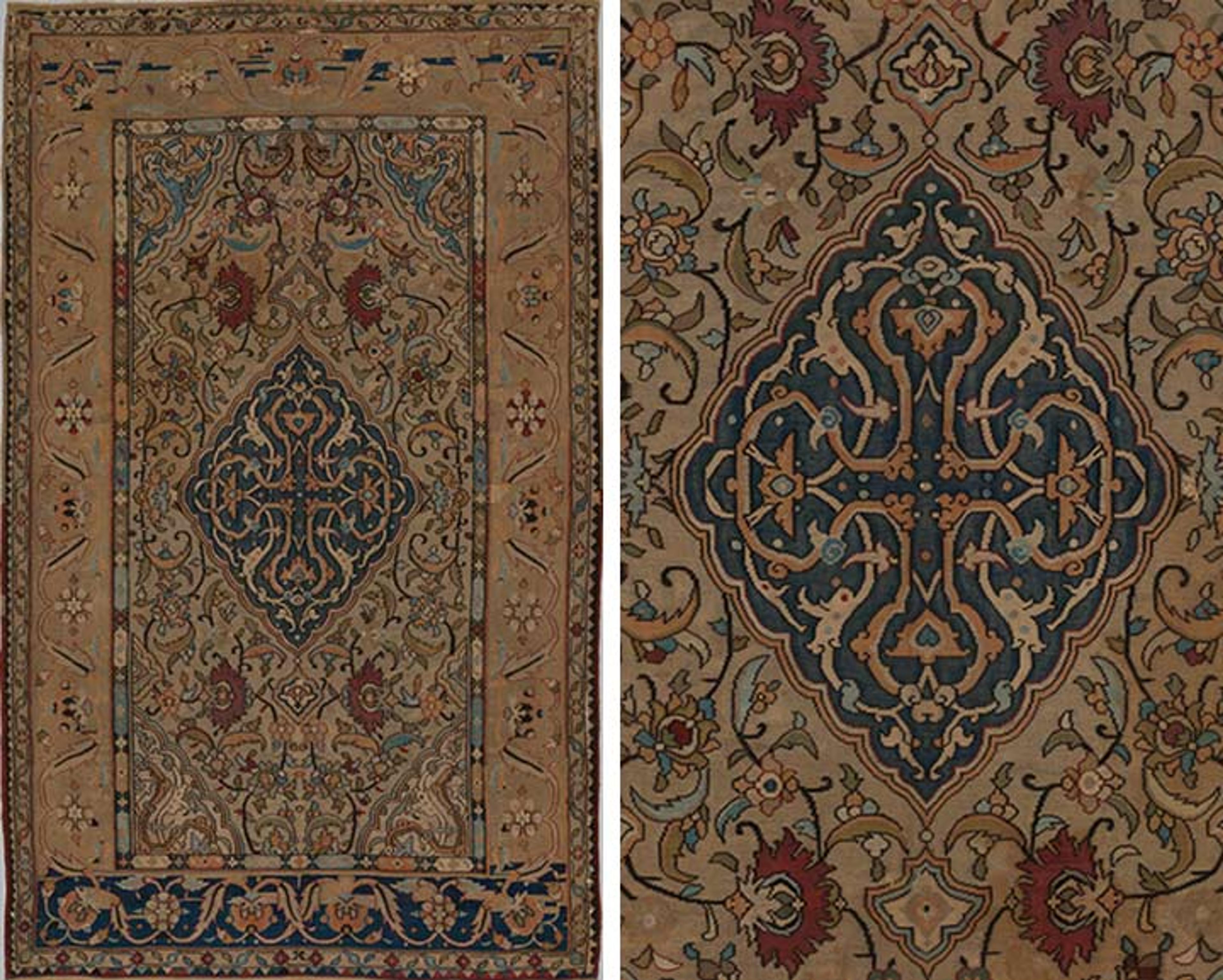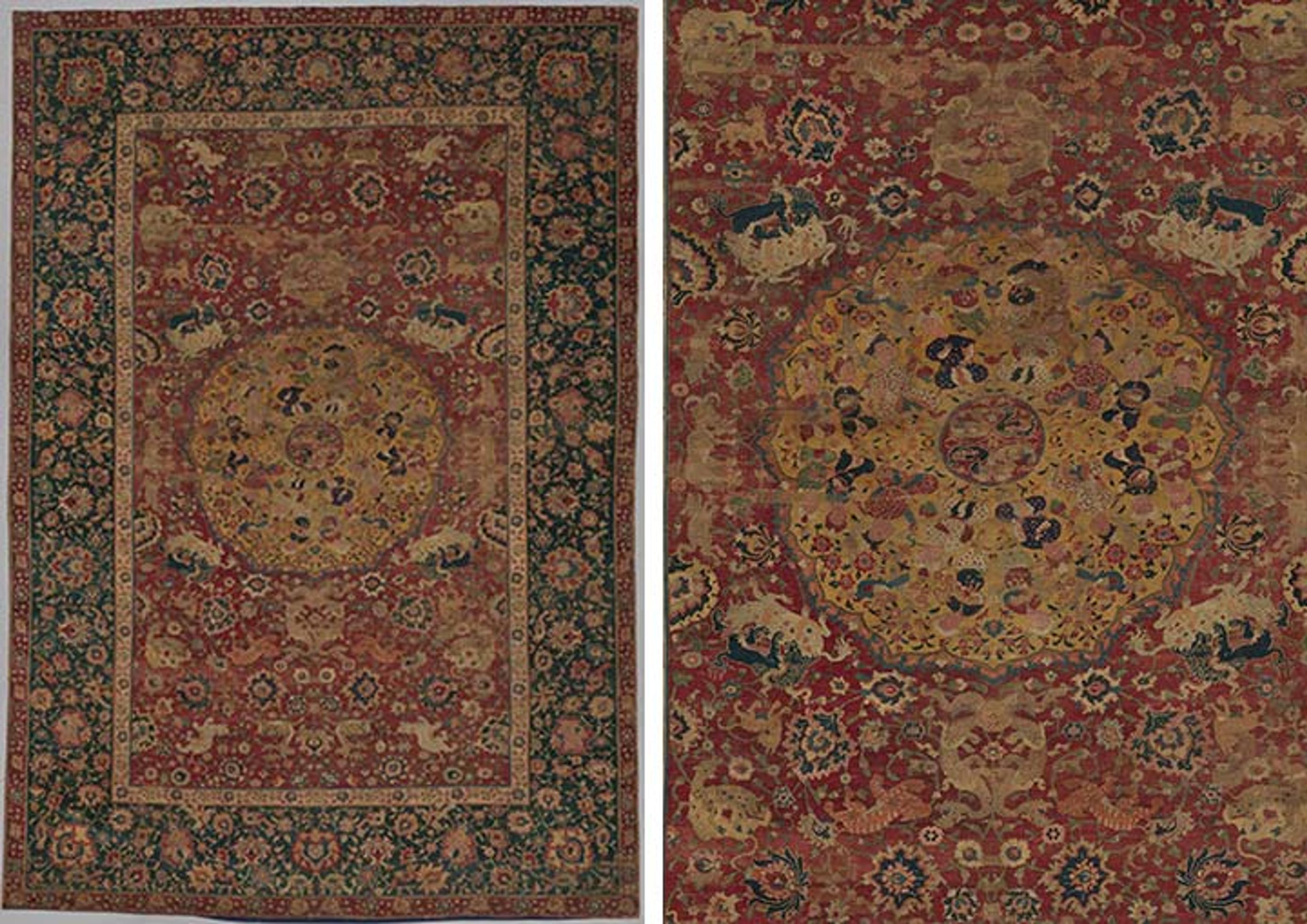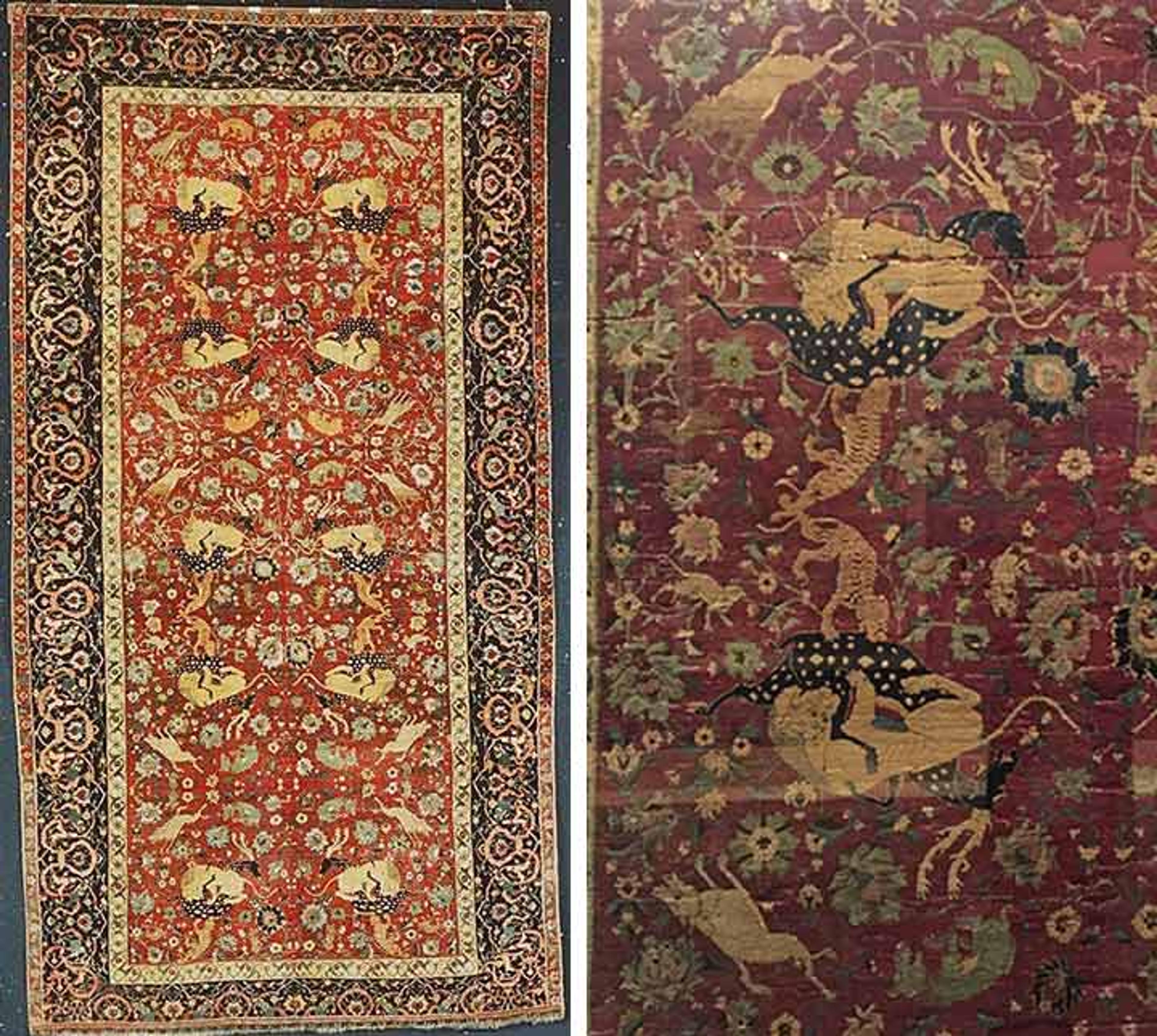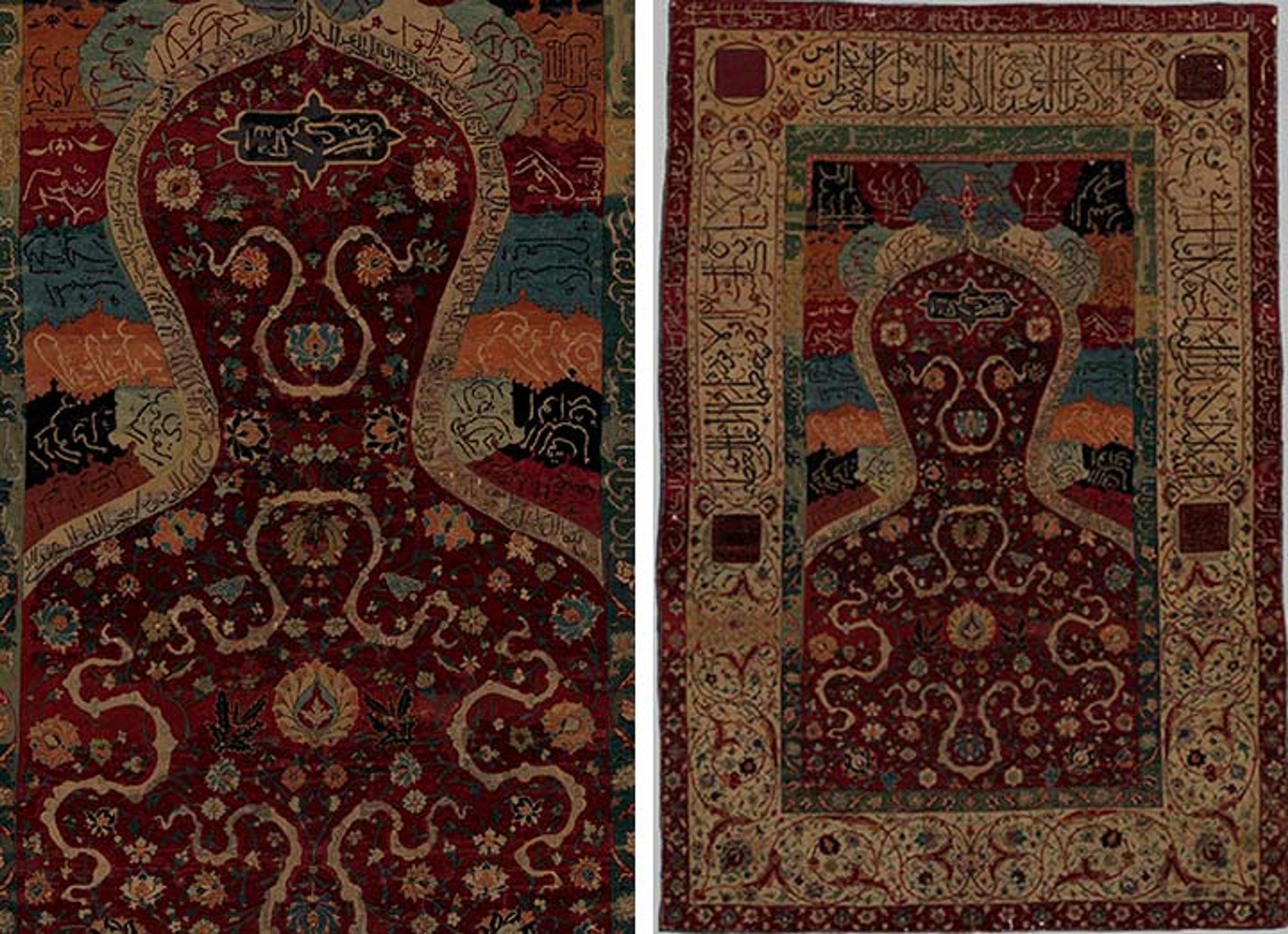Taking a Closer Look at the Medallions in Carpets for Kings

Gallery view of Carpets for Kings: Six Masterpieces of Iranian Weaving. Photo by Courtney Stewart
«Just in time for the Persian New Year (Noruz), which was celebrated this year on March 20, the Department of Islamic Art has opened a new exhibition, entitled Carpets for Kings: Six Masterpieces of Iranian Weaving. This intimate installation features six 16th- to 17th-century Persian treasures, which are making their debut after several decades of rest in The Met's storerooms and conservation labs. The show highlights the meticulous work recently undertaken by the Department of Textile Conservation and supported by proceeds from the Museum's annual NoRuz at The Met Gala.»
On a recent walk through the exhibition, I noticed that while these beautiful carpets have much in common, there is great diversity in the ornament of the central medallions.

Polonaise carpet, first half of 17th century. Iran, probably Kashan. Silk, metal-wrapped thread; tapestry weave, L. 93 x W. 57 in. (236.2 x 144.8 cm). The Metropolitan Museum of Art, New York, Rogers Fund, 1931 (31.70)
Among the carpets on display are a group known as "Polonaise." Produced during the reign of Shah 'Abbas I (r. 1587–1629), these carpets were not only enjoyed in Iran but also made for export to Europe, where they came to be mistakenly identified as Polish (Polonaise). These sumptuous works were fabricated from silk threads wrapped in strips of precious metal, which created an opulent, shimmering effect. The floral and saz-style ornament in this rug is typical of the period, but the large cross in the central medallion reveals that this Persian carpet was created for a European patron—in this case, the Royal House of Saxony.

Carpet with scenes of bazm and razm, second half of 16th century. Present-day Afghanistan, Herat. Silk (warp), cotton (weft), wool (pile); asymmetrically knotted pile, L. 99 3/4 x W. 70 in. (253.4 x 177.8 cm). The Metropolitan Museum of Art, New York, Mr. and Mrs. Isaac D. Fletcher Collection, Bequest of Isaac D. Fletcher, 1917 (17.120.127)
Another carpet, made for domestic consumption, features Persian genre scenes of the 16th century, including the customary activities of feasting (bazm) and battle (razm). The medallion features a group of turbaned figures seated in a circle, playing musical instruments and joyfully engaged in bazm. This central motif is framed in the four corners with scenes of animal combat that allude to the concept of razm. Paired animals and spiraling floral motifs fill the rest of this beautiful composition.

Carpet from shrine of Shaikh Safi at Ardabil, 16th century. Iran. Silk (warp and weft), wool (pile); asymmetrically knotted pile, L. 140 x W. 71 1/4 in. (355.6 x 181 cm). The Metropolitan Museum of Art, New York, Frederick C. Hewitt Fund, 1910 (10.61.2)
Feline predators and antlered prey also abound in the central area of a carpet that was formerly kept in the shrine of Shaikh Safi at Ardabil—a site that collected many royal gifts. This handsome silk carpet with its figures of animals would not have been used in sacred spaces in the shrine, but would likely have served as a floor covering in the dormitory.

Carpet, 16th century. Attributed to Iran. Silk (warp and weft), wool (pile), metal wrapped thread; asymmetrically knotted thread, brocaded, L. 63 1/2 x W. 43 1/4 in. (161.3 x 109.9 cm). The Metropolitan Museum of Art, New York, Mr. and Mrs. Isaac D. Fletcher Collection, Bequest of Isaac D. Fletcher, 1917 (17.120.124)
In addition to carpets that were probably used in secular spaces, Carpet for Kings features one prayer rug that can be identified as such by its niche-shaped central motif. This work is ornamented with various Arabic inscriptions, including Qur'anic verses and the names of God. At first glance, the central shape may appear to have the form of a silhouetted figure, but it is in fact a stylization of a mihrab, or architectural prayer niche—an appropriate shape for a prayer rug. This remarkable piece is thought to have been a royal gift from Shah 'Abbas I of Iran to the Ottoman Sultan Murad II (r. 1574–1595).
These are just a few of the carpets featured in this jewel of an exhibition. Be sure to visit these beautiful works in person in gallery 458 until August 27, 2017.
Related Links
Carpets for Kings: Six Masterpieces of Iranian Weaving, on view at The Met Fifth Avenue through August 27, 2017
RumiNations: "Exploring Persian Literature in Bazm and Razm" (May 19, 2015)
Courtney Stewart
Courtney A. Stewart is the senior research assistant in the Department of Islamic Art.